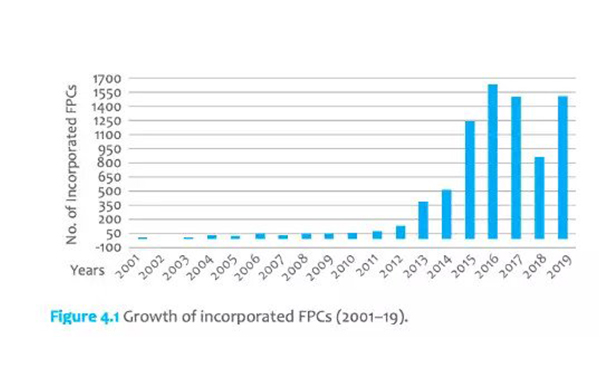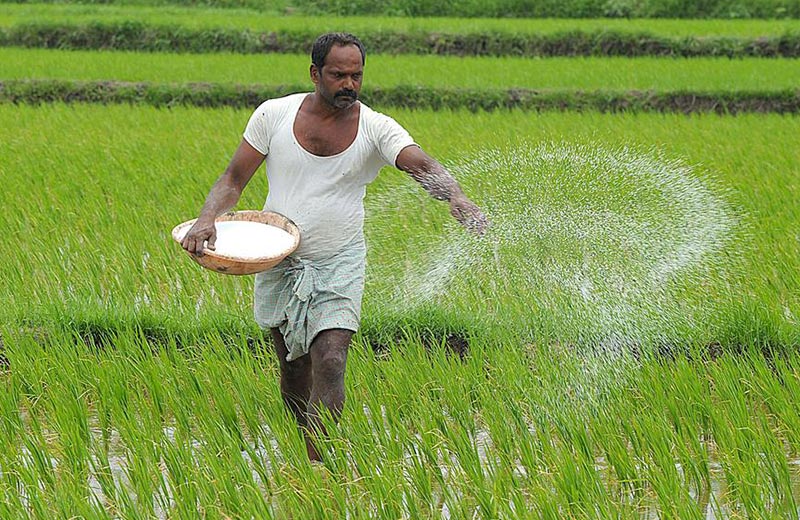Featured in THE TIMES OF INDIA
Agriculture has been pivotal to India since the dawn of its civilization. With one of the largest arable lands complemented by favorable climatic conditions, it enables the subcontinent to produce a variety of crops. Even today despite rapid urbanization, the growth of the agricultural sector is intrinsically tied to the growth of the economy as a whole.
In terms of economic productivity, it contributes to at least 1/6th of the national income and helps maintain food security within the country. India’s total agricultural and allied products exports stood at US$ 41.25 billion in FY21. The sector employs over 50% of the Indian population and 70% of the Indian rural population is dependent on agriculture for their livelihood. By virtue of this, the productivity growth in the agriculture sector is indicated to have the most sweeping impact on poverty reduction (approximately twice that of manufacturing). Recognizing this, the government declared its goal to double farmer income by 2022.
However, the sector has been fraught with challenges in terms of the availability of formal capital, mechanization, logistics, and market accessibility. The severity of which was heightened by the pandemic-led chain of events but on the flipside, revealed the unexplored scope of agriculture.
The impact of Covid-19 on the agricultural sector
Even though India is a net exporter of food in recent years, the pandemic disrupted production and marketing, because of labor and logistical constraints. It has also wreaked havoc on the rural economy as the negative income shock restricted farmers’ access to markets and increased prices of food commodities. However, even though farming is considered a profession with low margins and high costs, agriculture happened to be one of the very few sectors that absorbed a sizable workforce that underwent reverse migration.
It is noteworthy that recent quarterly GDP estimates post-COVID shows agriculture as the only sector to register positive growth of 3.4% during the financial year (FY hereafter) 2020–21 (Quarter 1: April 2020 to June 2020). This is a testament to the robustness and resilience of India’s agricultural sector that cushioned the Indian economy through the crisis. The heightened responsibility and potential of the sector during the pandemic led to it being prioritized during the post-pandemic recovery. Now more than is a compelling need for the ecosystem to leverage tech innovations to create a self-reliant agricultural sector that is the gold standard for the rest of the world.
Unlocking the potential of India’s agricultural sector
The Government of India recognizes the potential agriculture holds and the overall thrust of the Union Budget 2022 seems to be towards building a more robust and resilient agricultural infrastructure for farmers through modern technological intervention and extensive financial investments within the agritech start-up and larger agri-value chain ecosystem.
The introduction of ‘Kisan Drones’ for land records, digitization, and crop assessment will lead to improved efficiency in key farm interventions especially for small-holder farmers; it could also help boost employment opportunities within the rural landscape if the opportunity is catalyzed by the government. The breakthrough decision to focus on crop-diversification and promotion of domestic oilseeds production is important, as it will promote both the expansion and productivity enhancement within the often neglected horticulture sector.
The Government of India has introduced various schemes and policy changes to support the growth of agriculture in India, many of which have initiated the adoption of tech and provided better access to inputs to enhance the current processes and structures of agriculture and the existing food system within the country. But these policy initiatives have historically only been focused on increasing agricultural productivity and have not been successful in efficiently transforming the value chain.
While there are indications of increased improvement in the yields through improved inputs. Intervention within agriculture must go beyond capital investment. For this reason, it was encouraging to see State Agricultural Universities (SAUs) being given their due diligence in the budget through increased financial support to promote higher education, research, and training within the sector.
There needs to be clear know-how of the problems of farmers at the grassroots which stretch beyond capital requirements. The solution to increasing farmers’ income lies in increasing farmers’ share in the final consumer paid price by decreasing the cost of marketing, transaction cost, and other intermediaries. As a sector that heavily relies on the efforts of farmers (most of whom are small and marginal farmers), it is in its best interest to empower them. One measure small-holder farmers have started to increase margins and pool resources is through Farmer Producer Organisations and farmer collectives (FPC). A major hindrance to this is the lack of a robust value chain approach that solves end-to-end problems. However, there is a deliberate attempt to turn this around through government-led policy initiatives and on-ground intervention of private players with the aim to boost this scalability in confidence & collaboration with the farmer.

Rapid technological and infrastructure development has added a new dimension where the issues such as hyper localization and fragmented supply chains can be addressed. The recently increased access to mobile connectivity in India has also increased the potential to solve problems of information dissemination and provide verified market linkages at both the demand and supply sides.
This potential is being rapidly tapped into by private players offering transparency and working directly with farmers, by empowering them to make the first leap into digital transactions. Several players within the agritech ecosystem are now trying to increase the equilibrium within the agri-value chain by providing customized solutions to the pain points of small-holder farmers.
At the horizon
Agriculture depends on connecting all stakeholders within the agri value chain and empowering the farmer. In fact, recent reports indicate that India’s agriculture technology sector has the potential to grow to $24.1 billion in the next five years which is indicative of the potential that the ecosystem is on the cusp of unleashing. As a highly entrepreneurial country, India’s farmers and entrepreneurs have the ability to co-create systems that are sustainable, efficient, and self-reliant. For that understanding, the on-ground data at the supply and demand sides is imperative to make informed and focused decisions. If we create an ecosystem where all stakeholders across the agri-value chain have access to a higher equilibrium through financial intermediation, market linkages, information, etc. there is no reason why agriculture cannot be the biggest contributor to our economy.
About the Author






Leave A Comment